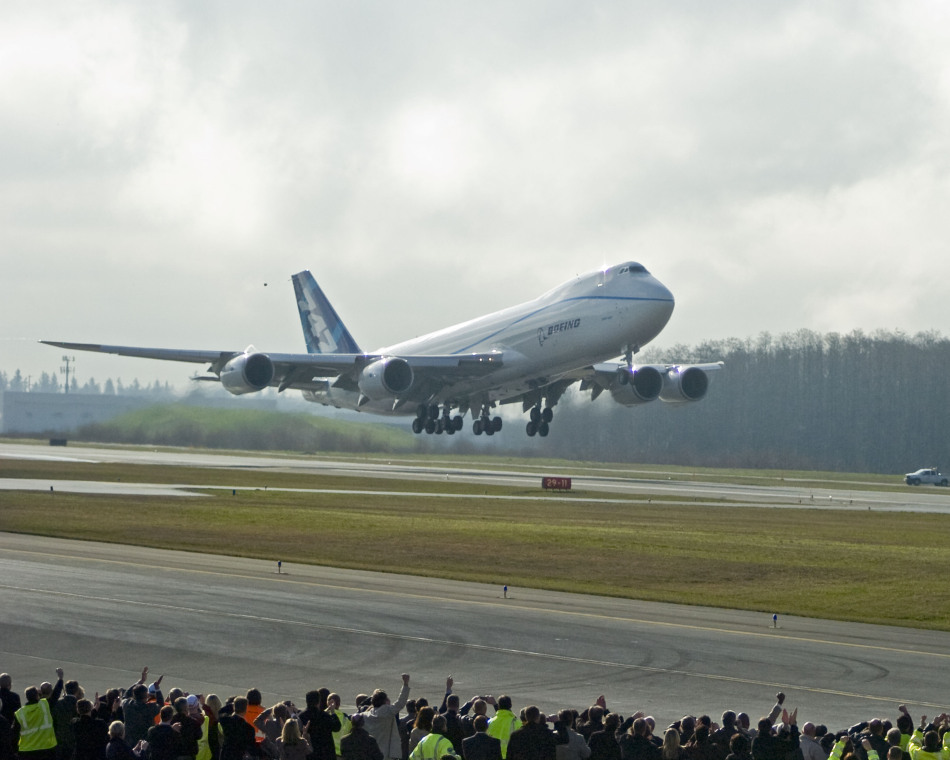

Almost a completely redesigned airplane, the 747-8F incorporates a stretched fuselage; a more flexible wing with increased span, new airfoils, and raked tips; more powerful and efficient engines; and fly-by-wire systems similar to those of the Boeing 787 airliner. The freighter has two cargo decks and the nose can open for easy access to the cargo bays.
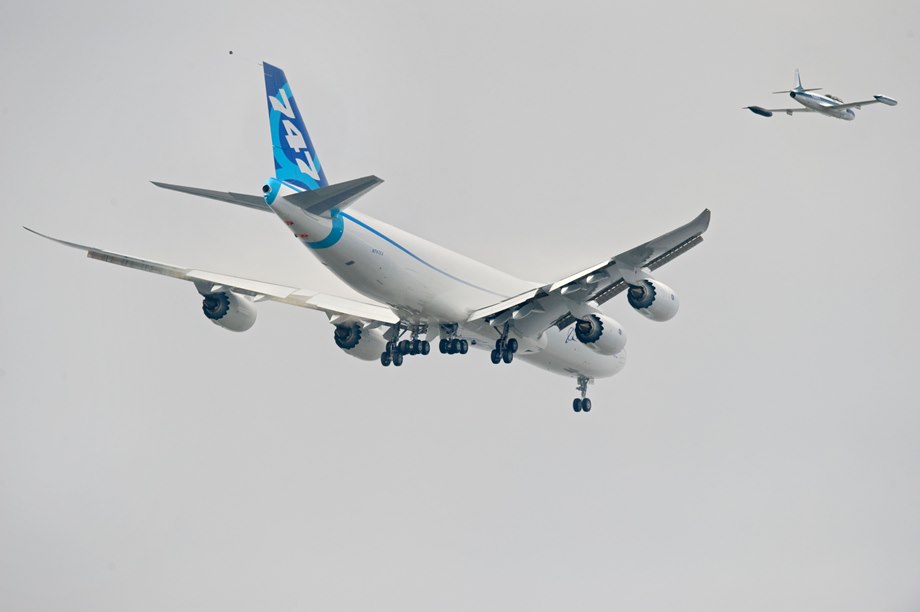
During the 3 hour, 39 minute flight, N747EX reached an altitude of 17,000 feet (5,182 meters) and a maximum speed of 230 knots (265 miles per hour/426 kilometers per hour). The prototype landed back at PAE at 4:18 p.m. PST (00:18 UTC). Mark Feuerstein said, “The airplane performed as expected and handled just like a 747-400.”
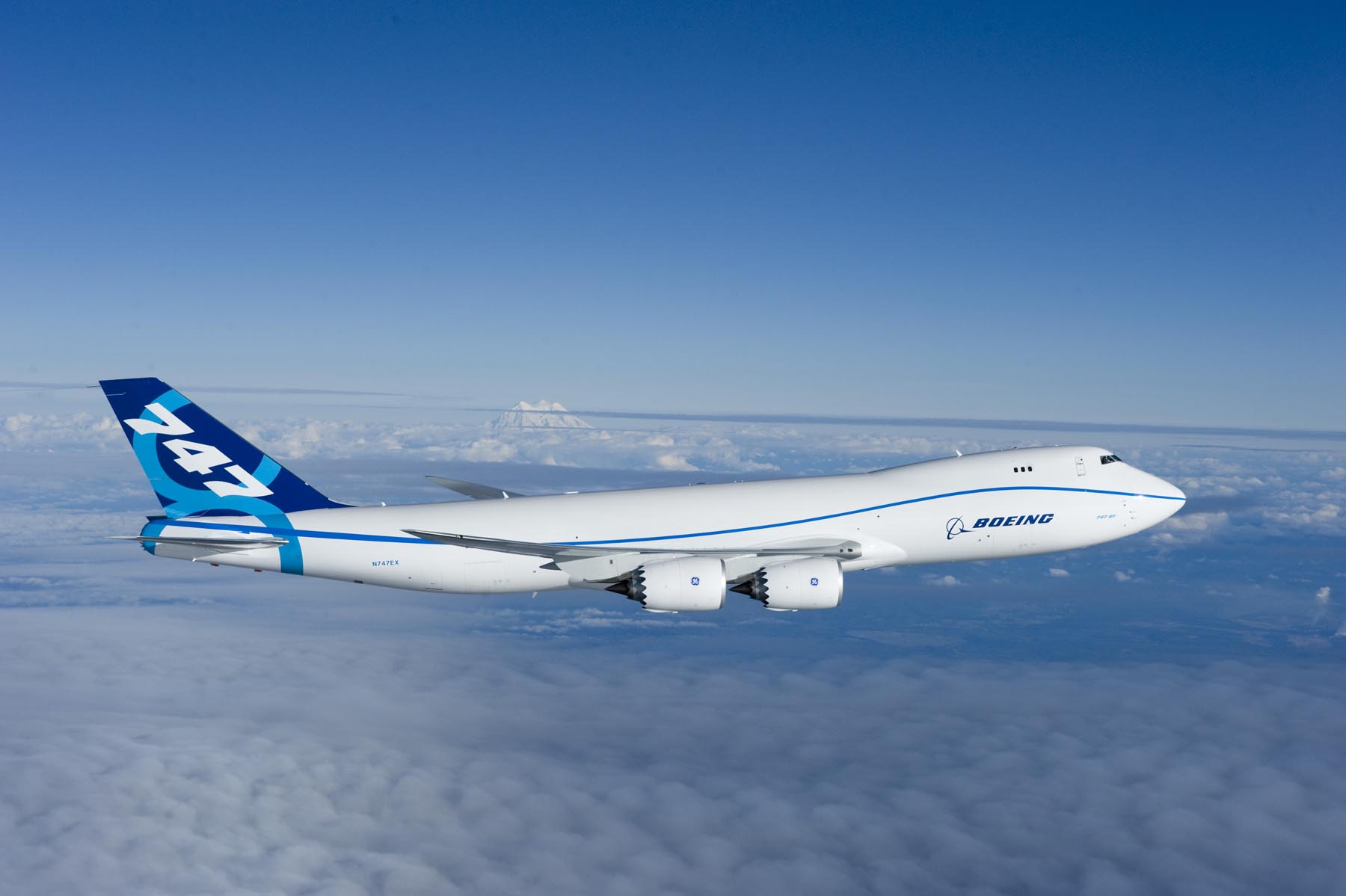
N747EX was one of three new freighters used during the fourteen month flight test and certification program. Most of these flights took place at Moses Lake, Washington, and Palmdale, California. the three -8Fs flew more than 3,400 hours. The Federal Aviation Administration type certificate was approved 19 August 2011.
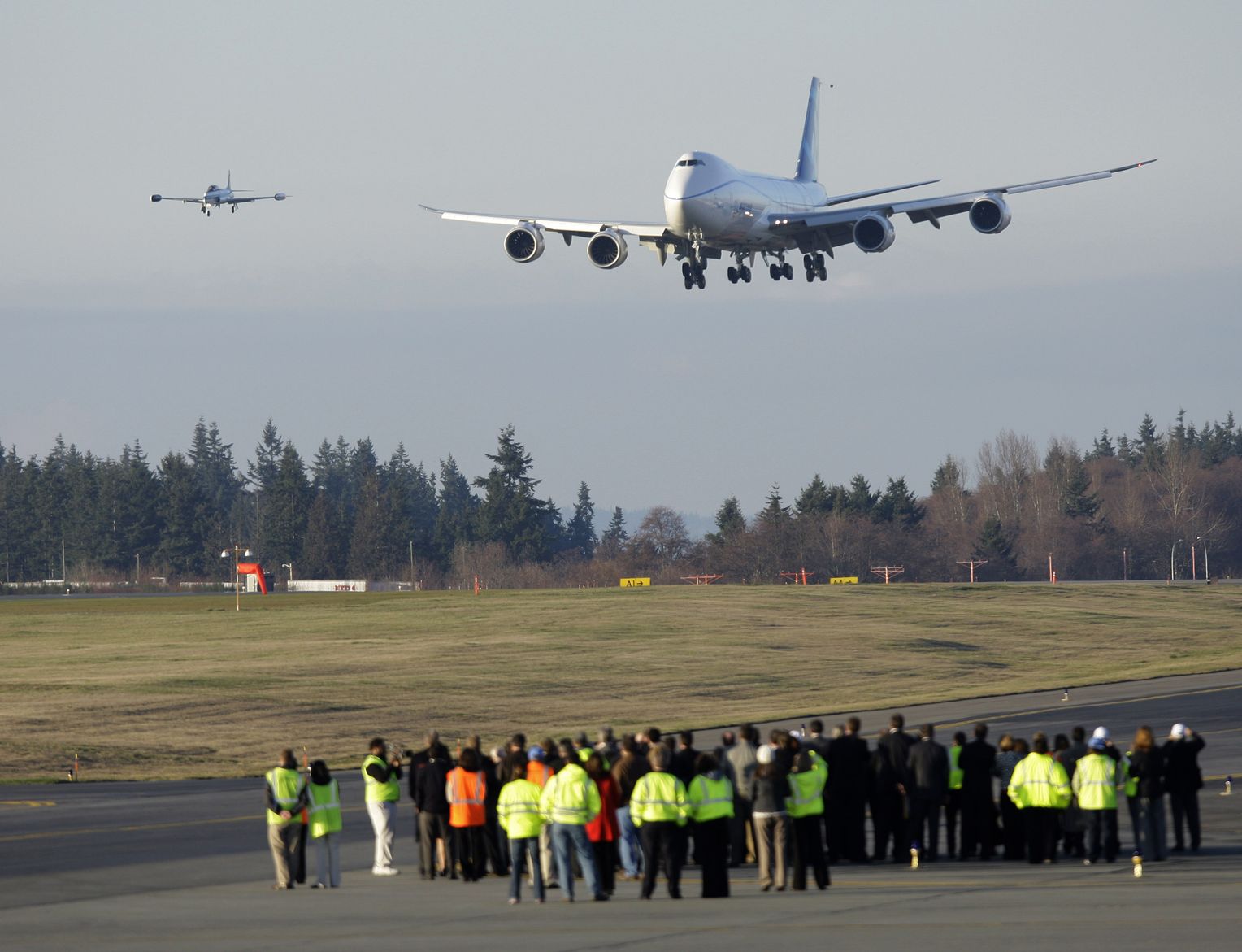
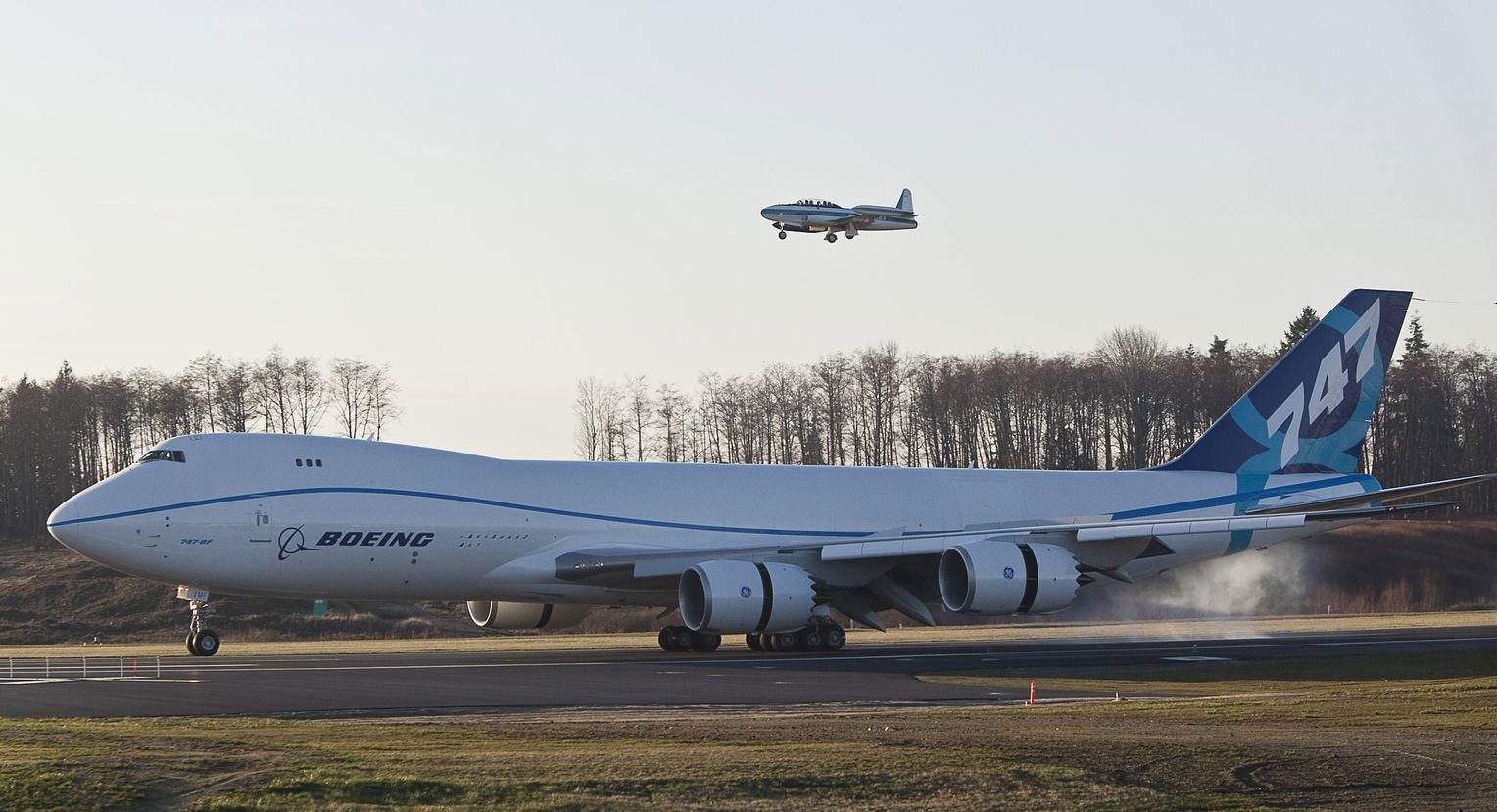
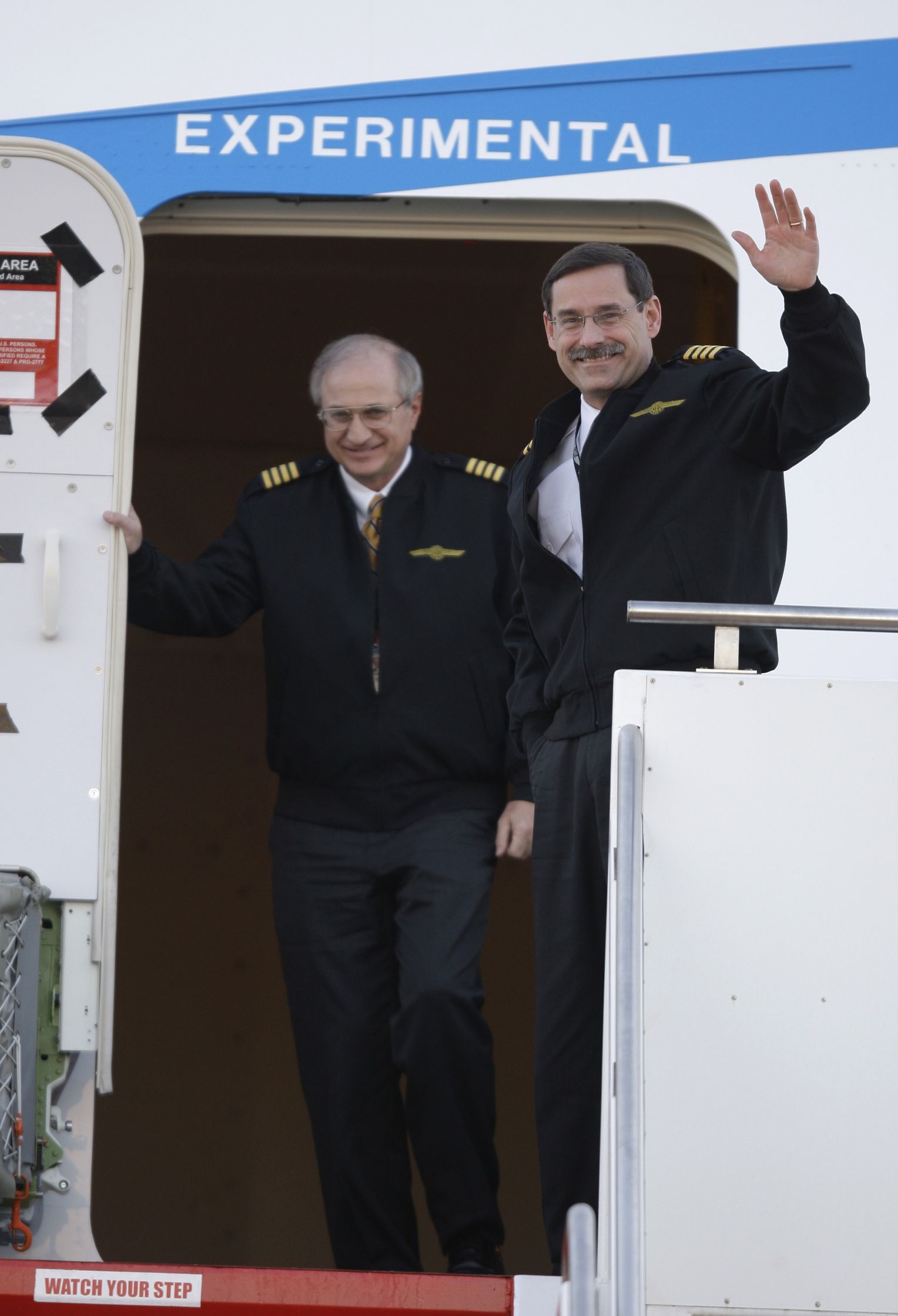
N747EX is designated as a 747–8R7F, serial number 35808. It is a very large, swept wing, commercial cargo transport powered by four engines. The minimum flight crew consists of a pilot and co-pilot, though on long flights there may be six or more pilots aboard. The 747-8F is 250 feet, 2 inches (76.251 meters) long, with a wingspan of 224 feet, 5 inches (68.402 meters), and overall height of 63 feet, 6 inches (19.355 meters). The length is an 18 foot, 4 inch (5.588 meters) stretch over the previous 747-400. The cargo decks have a volume of 30,288 cubic feet (858 cubic meters).
The new freighter has an empty weight of 434,600 pounds (197,131 kilograms). The Maximum Takeoff Weight (MTOW) is 987,000 pounds (447,696 kilograms). The payload is 303,700 pounds (137,756 kilograms).
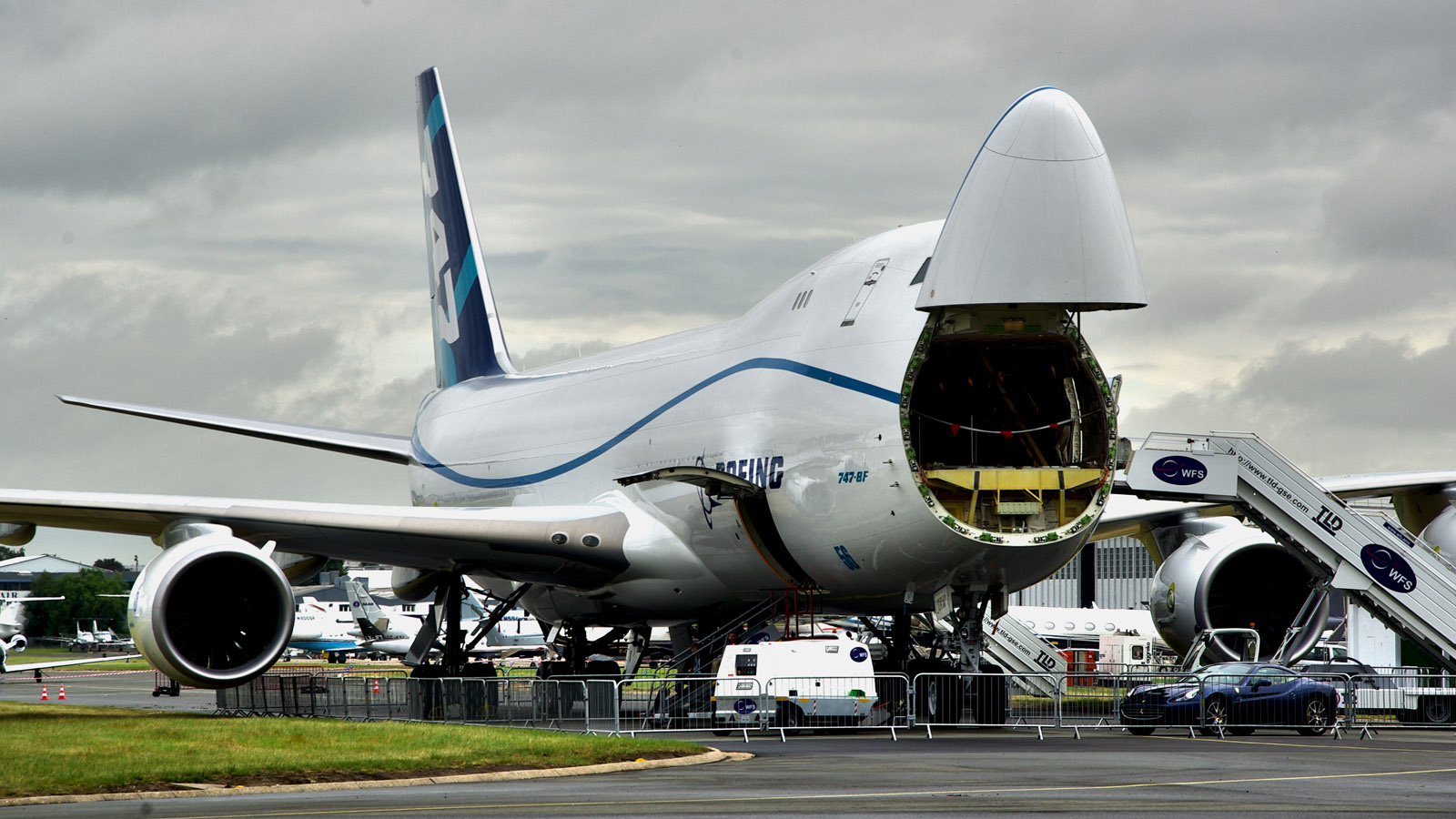
The –8 is powered by four General Electric GENx-2B67 high bypass turbofans. These are dual-rotor, axial flow engines with a single fan stage; 13-stage compressor section (3 low-pressure and 10 high-pressure stages); and an 8-stage turbine (2 high- and 6 low-pressure stages. The fan has a diameter of 104.7 inches (2.66 meters). Each engine weighs 12,396 pounds (5,623 kilograms) and produces 66,500 pounds of thrust (295.8 kilonewtons).
The cruise speed of the 747-8F is Mach 0.845. Its maximum speed, VMO, is 365 knots (KCAS) (676 kilometers per hour). The maximum Mach number, MMO, is 0.9 Mach. The freighter’s maximum operating altitude is 42,100 feet (12,832 meters).
The airplane has a maximum fuel capacity 63,034 U.S. gallons (238,610 liters), giving it a range of 4,390 nautical miles (5,052 statute miles/8,130 kilometers).
N747EX was de-registered 23 May 2012 and exported to Luxembourg for CargoLux. It was re-registered LX-VCA, and given the name City of Vianden
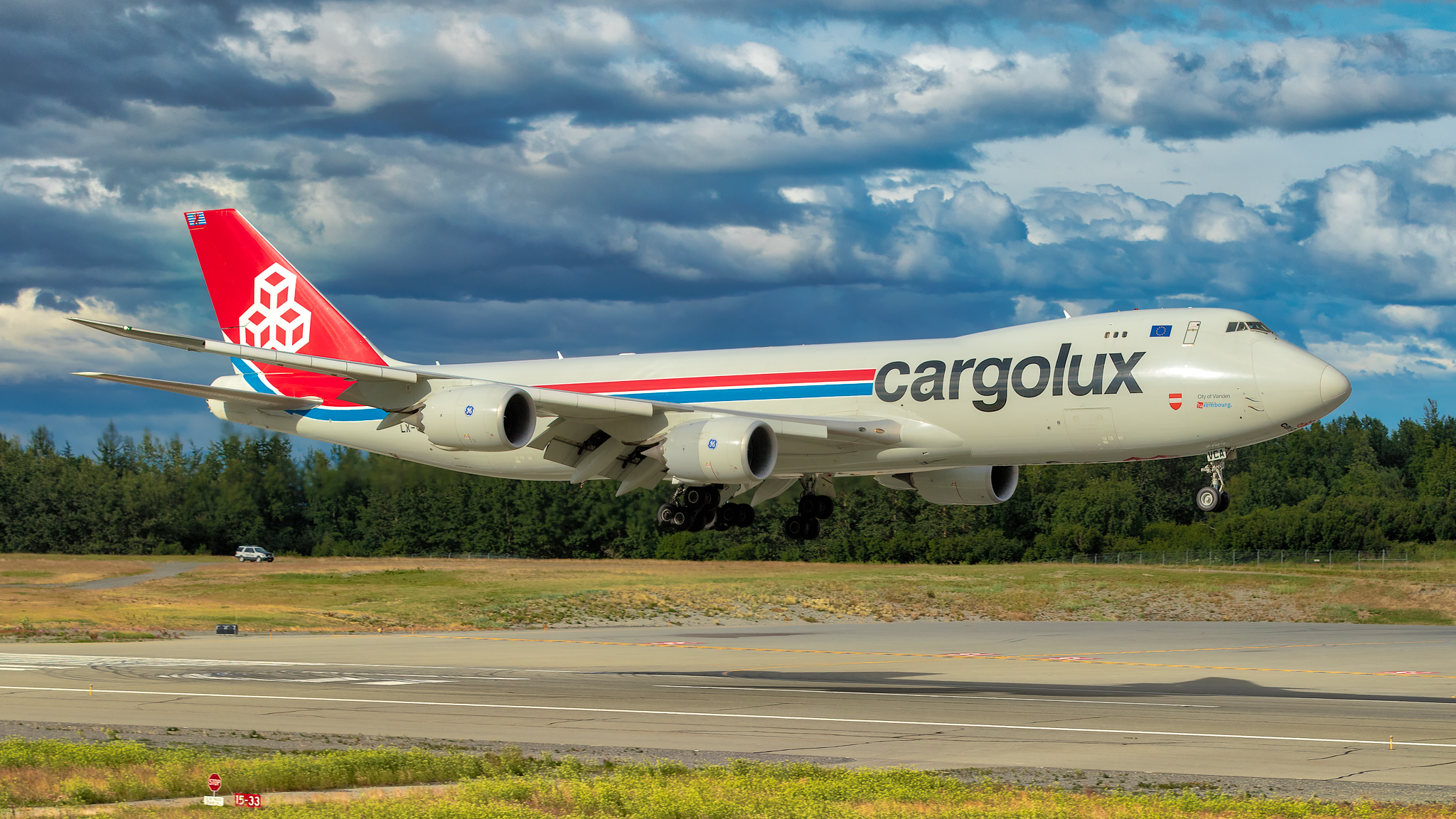
The 747 first flew 9 February 1969. As of December 2020, 1,562 have been built. On 12 January 2021, Boeing announced that the final 747s, four Boeing 747-8F freighters, had been ordered by Atlas Air Worldwide Holdings, Inc. The final Boeing 747, N863GT S/n 67150, line number 1574) was delivered to Atlas Air 31 January 2023. The production of the “jumbo jet” has come to a close.
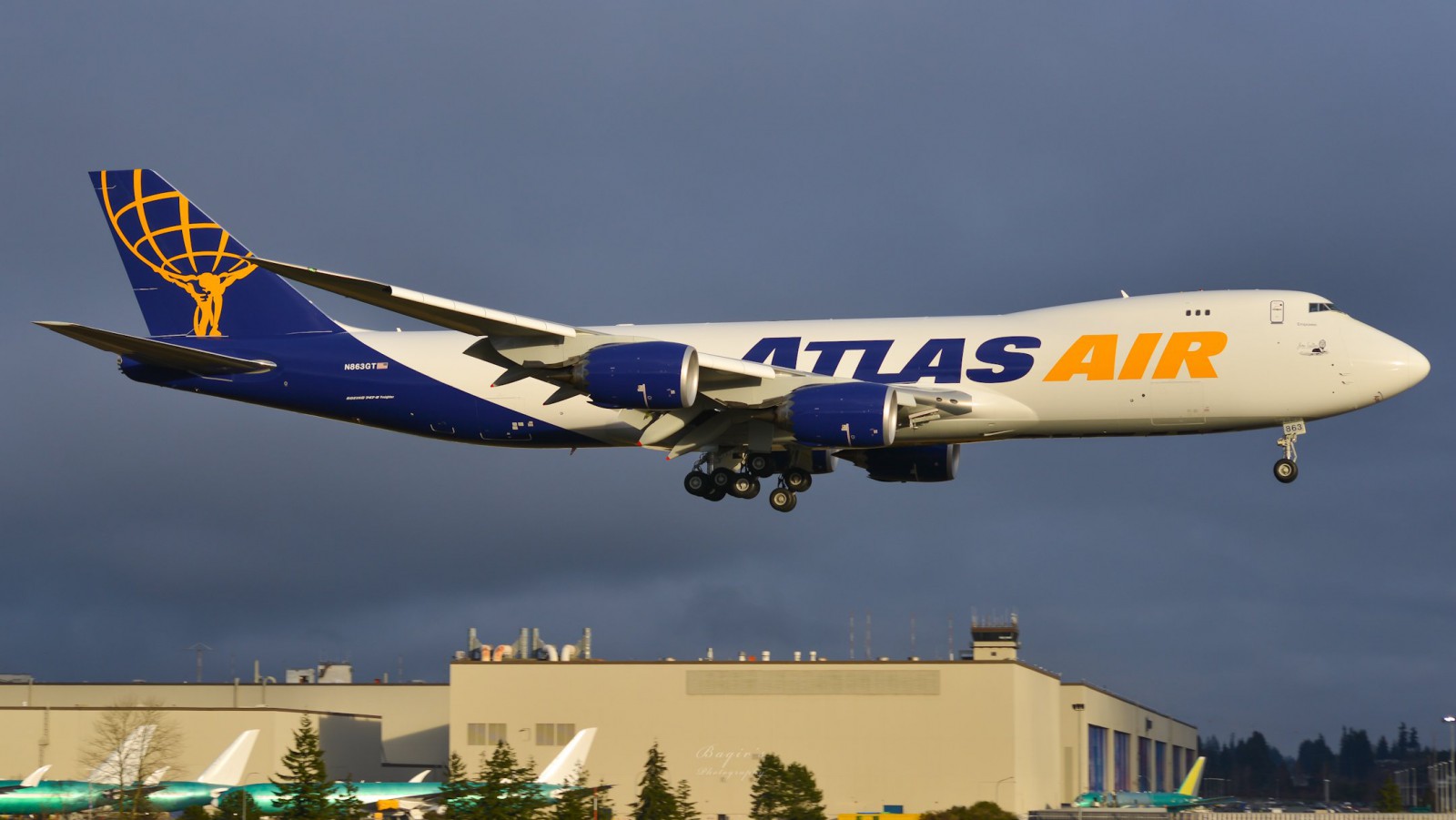
© 2022, Bryan R. Swopes
Nice B747-8 tribute Bryan!
That was certainly a great day to remember!! The “Queen” will now fly on safely for decades yet, in terrific airline service, as a freighter. I saw her at every possible flyable corner of the flight envelope, going well beyond any normal airline operation. She always brought me back home, with grace, style, and plenty of reserve. Of the many hundreds of types I’ve flown, the B747 was, and always will remain, my favorite, forever.
Thank you very much, Captain Imrich. You made my day! One of the most rewarding things about writing This Day in Aviation is when I hear from someone with an involvement: “That was my grandfather.” “I was crew chief on that fighter.” And on a very few occasions, when I have heard from a pilot who was directly involved. Thank you so very much, Captain. . . A friend (and long, long, ago, a student of mine) regularly flies the -8F in humanitarian relief operations around the world. They frequently fly at weights beyond MTOW. Right now, he is flying vaccines. My thanks for providing him with such a great airplane. He is certain that it will continue to fly for decades to come. . . . And my condolences re: Captain Wygle.
4390nm or 8130km is the range at max payload. With min payload/max fuel it is north of 8600nm or almost 16.000km. Vne is m0,97, the by far fastest for a commercial airliner, superseeding their own former record of m0,95 for the 747SP.
On a side note: Initially the 8I was proposed to be shorter than the 8F to save fuel and extend range, but Lufthansa persuaded Boeing to give it the same fuselage – which turned out to be fortunate, since the “interest” of Emirates in a “longer range” 8I turned out to be fake, and so Boeing saved a lot of developement cost.